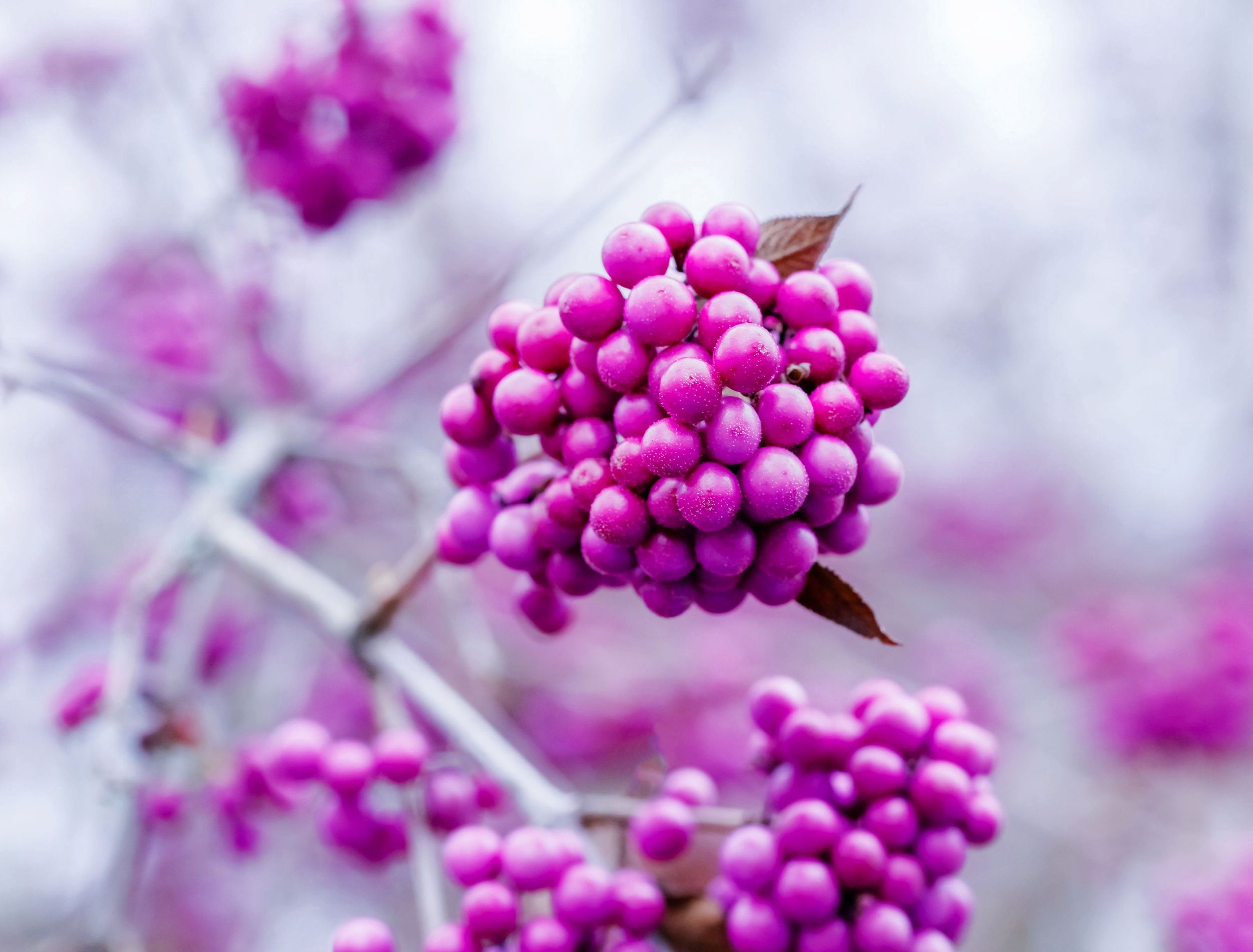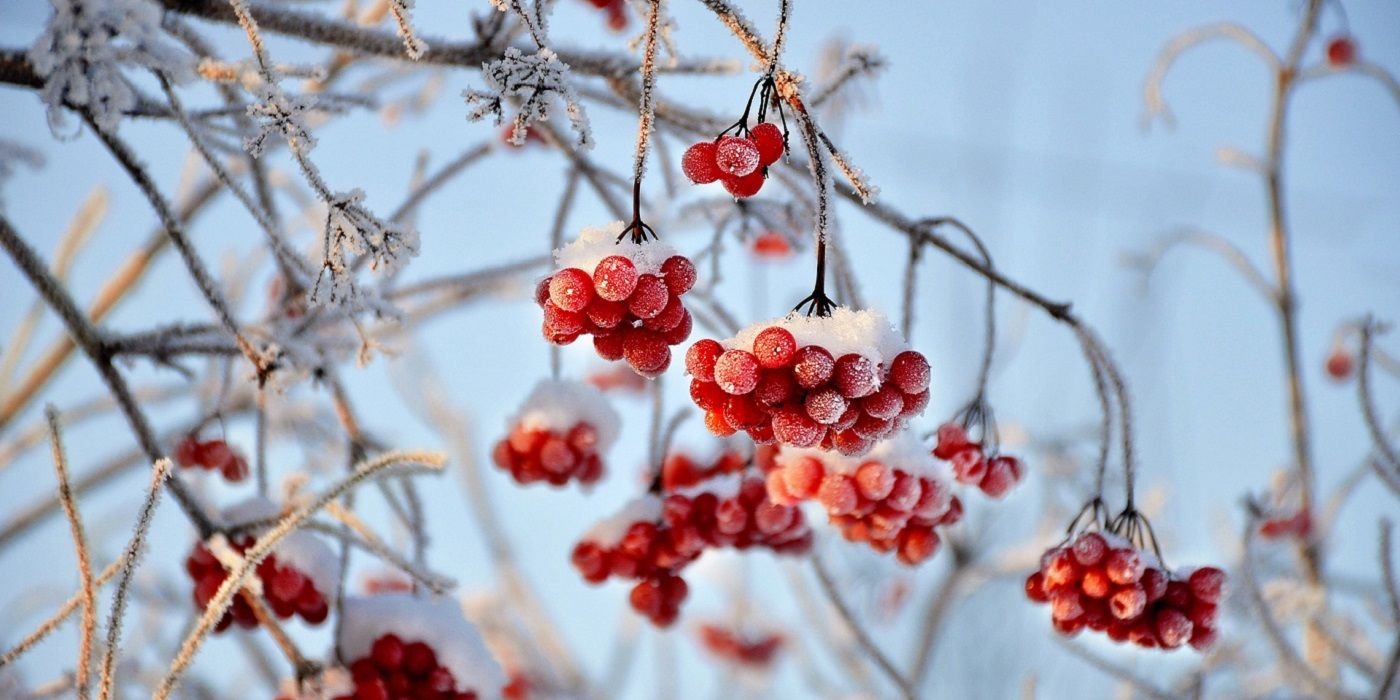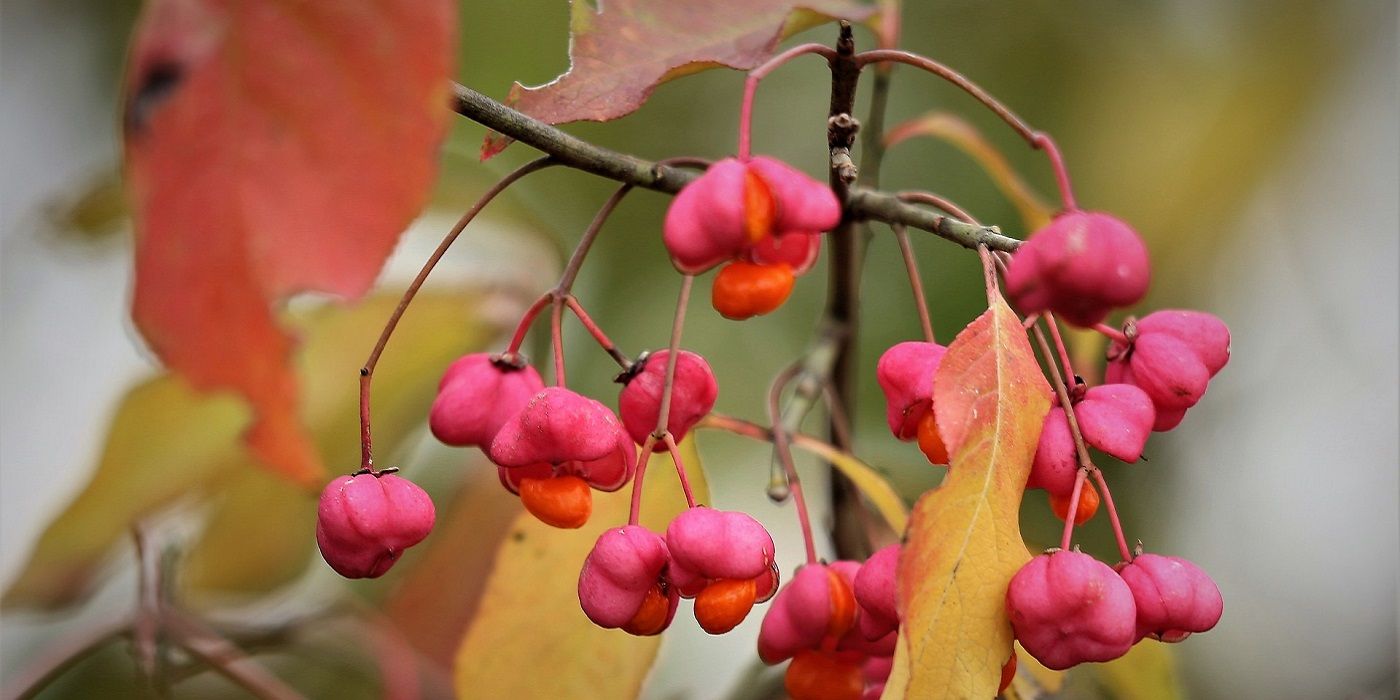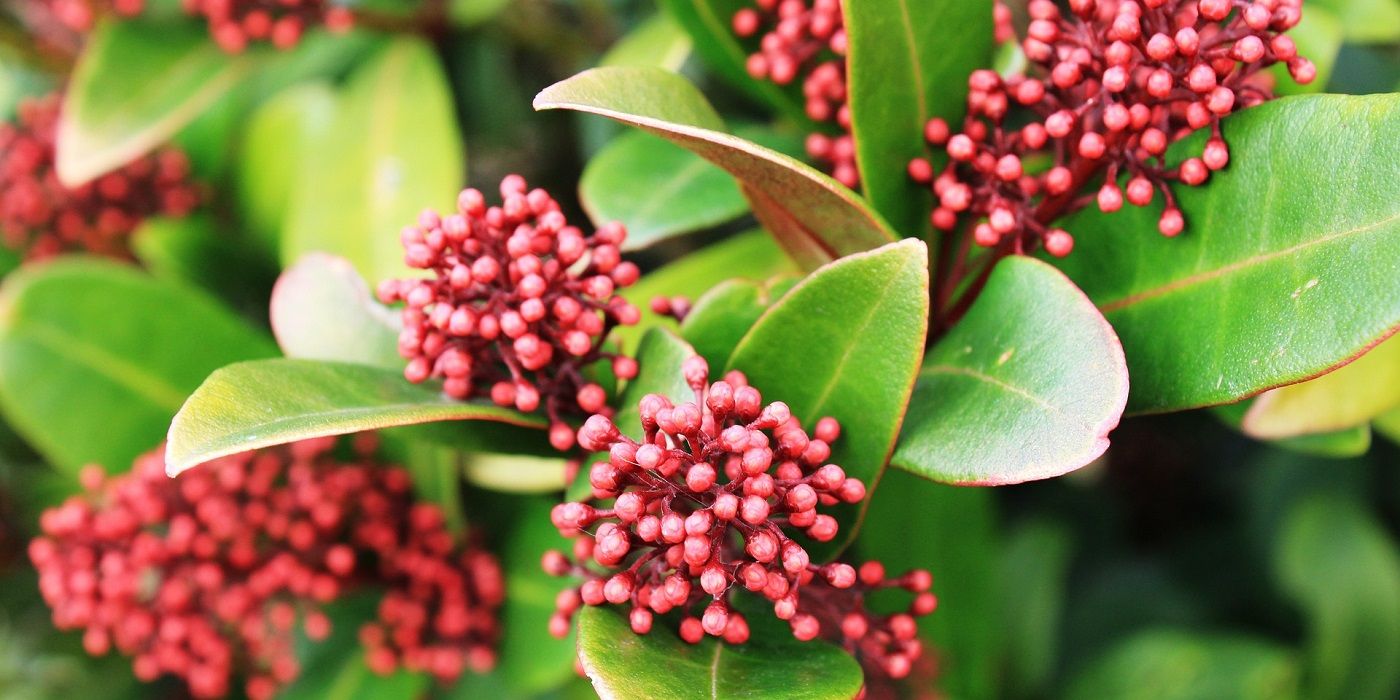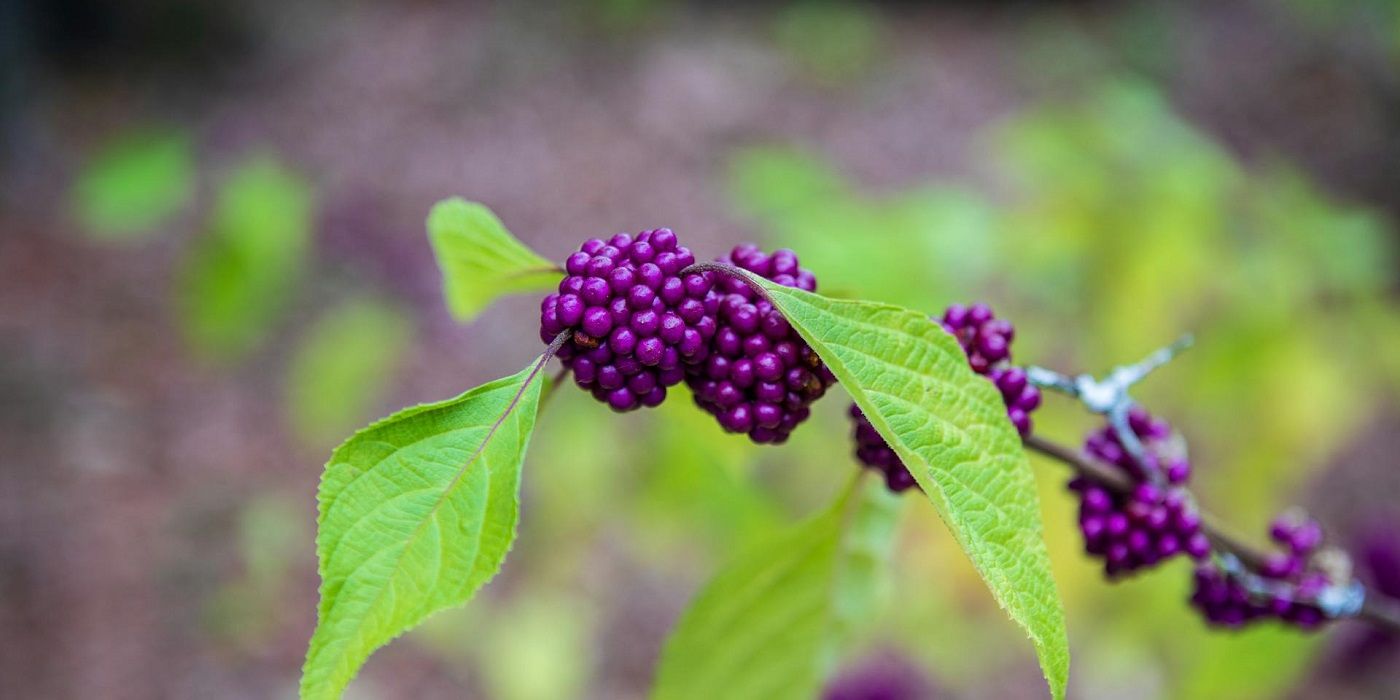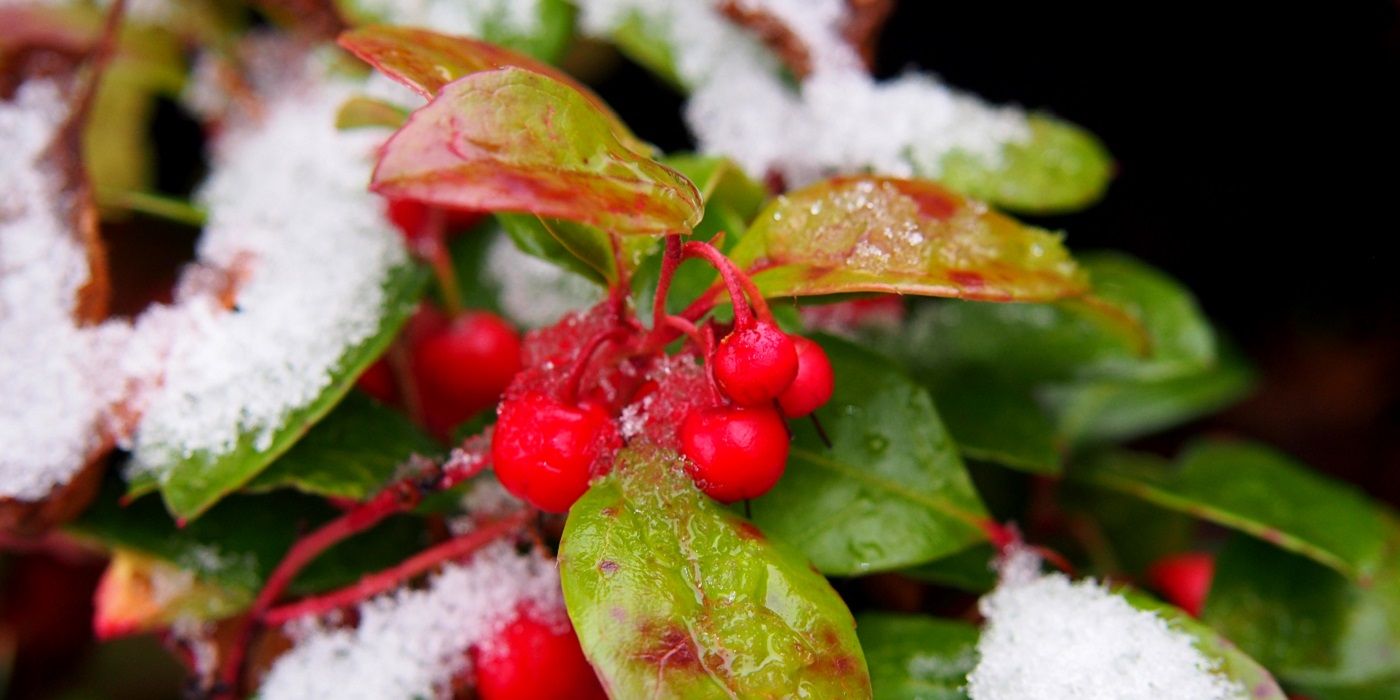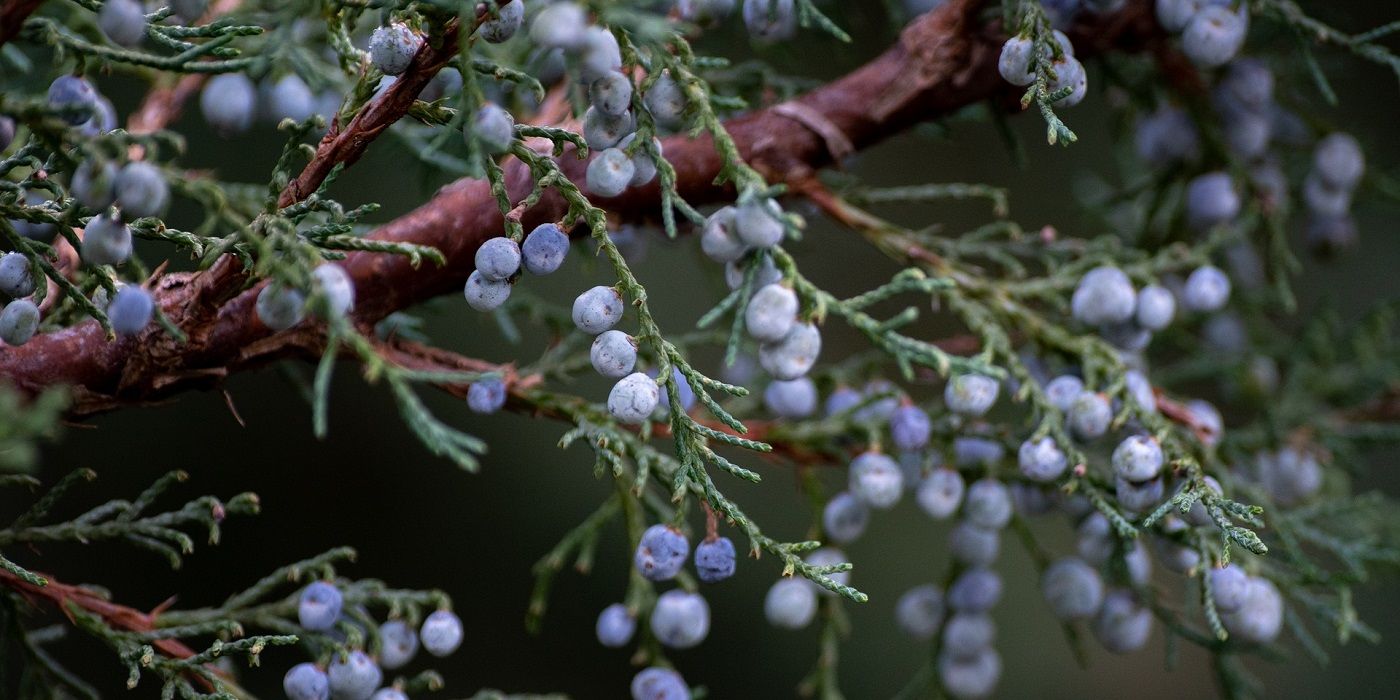Key Takeaways
- Vibrant winter berries can add color and beauty to your backyard, such as the red hues of the high bush cranberry.
- Plants like the spindle tree with shades of yellow, red, and orange, and the Japanese skimmia with crimson red berries, add visual interest.
- The beautyberry with purple berries, checkerberry with red berries, and common juniper with bright blue berries can create a colorful winter landscape.
Winter is a beautiful and exciting time, full of celebrations, hot cocoa, and snowball fights. But under all the holiday decorations and ice, your backyard might look a little drab and bleak, especially if you're used to all the colors from summer and the beautiful fall foliage. So, how can you brighten up your winter landscape? With low-maintenance, winter-hardy plants!
There's no need to think of winter as a lifeless time in the garden. Winter is the perfect opportunity to display a few berry bushes that will add texture, depth, and color to your yard. Learn all the details on each plant to find out which winter berries fit best with your needs and start landscaping in winter to keep your yard gorgeous year-round!
High Bush Cranberry Brings a Splash of Red
Fill your winter landscape with bold red hues
Also known as American cranberrybush, the high bush cranberry (Viburnum trilobum) boasts bright red berries. You will see vibrant berries from summer through winter when this shrub is part of your winter landscaping ideas. The shrub grows about 8 to 12 feet in height and width, producing white blooms in late spring and maple-like colorful foliage in fall for year-round beauty.
The plant is hardy in USDA Hardiness zones 2 to 7 and tolerates full sun to partial shade. When it comes to care, keep the soil moist with a pH of 6.8 to 7.2. High bush cranberry is also noted for attracting wildlife, such as birds. Rich in vitamin C, the winter berries this shrub produces are tart and best enjoyed after a frost. They are a delicious addition to jams.
Viburnum opulus var. americana is a native species, but you may also find the invasive European species commonly sold under the name Viburnum opulus var. opulus, which is mildly toxic. The name Viburnum trilobum can refer to both plants, though it typically refers to the native American species.
The difference between the two is easiest to spot when looking at the glands at the tip of the leaf stalk: the invasive species has glands that are typically shorter than wide, with oval-elliptic shape, and concave.
Spindle Tree Grows in a Rainbow of Colors
Add shades of yellow, red, pink, and orange to winter landscaping
The spindle tree (Euonymus europaeus) is a deciduous shrub or small tree that grows wider and rounder as it matures. Dry, shaded areas and well-drained loamy soil work best for this shrub. Keep the soil moist when this shrub is planted in full sun. The plant will survive full shade, but it won't show off its beautiful fall colors when it grows in a shaded spot.
Spindle tree is an elegant addition to your yard and a perfect choice for landscaping in winter, featuring sweet little yellow-green flowers in the spring. It also has large green leaves that turn into a rich burgundy in the fall. In late fall and early winter, you'll notice bright pink and red capsules that slowly open to reveal vibrant orange seeds.
No part of this shrub is for eating! The berries from spindle trees are toxic when consumed in large quantities. Also, the plant is labeled as invasive in some areas because of its ability to spread quickly.
Japanese Skimmia Displays Dramatic Colors
Add vibrant crimson red to your winter landscaping ideas
Japanese skimmia (Skimmia japonica) is a broadleaf evergreen shrub that grows 3 to 4 feet tall and 4 to 5 feet wide. It is best planted in full sun or partial shade and well-drained soil. The shrub blooms with creamy white flowers in April and has small crimson red winter berries in colder months.
Japanese skimmia is perfect when planted as hedging along a fence line or driveway, as it adds greenery and privacy during the warmer seasons and pretty fruit during the cooler months. In a winter landscape, the dark red berries will pop against the evergreen foliage. Plant this shrub in rich, well-drained soil where it will receive full to partial shade. Japanese skimmia will scorch when exposed to full sunlight.
Do not ingest the flowers, leaves, or fruit on this plant because they are poisonous!
Beautyberry Fills Your Yard With Purple
This beautiful shrub grows clusters of royal purple berries
American beautyberry (Callicarpa americana) can reach 10 feet in height, featuring lengthy arching branches and warm yellow fall foliage. Beautyberry blossoms with white and pink flowers throughout the spring and summer, meaning it offers plenty of color year-round. Still, it is most favored for its iridescent purple berries that form eye-catching clusters in fall and winter.
- Plant this shrub in partial shade to full sun and keep the soil moist.
- The arching shape is perfect for filling in the space beneath trees and is a great solution for landscaping in winter.
- You can either prune it back to 12 inches from the base each winter to encourage compact growth or allow it to grow into a tall woody shrub.
- Beautyberry foliage is loved by deer, while the winter berries are particularly appealing to birds.
Checkerberry Creates Vibrant Contrast
See purple, red, and white shades in your winter landscaping design
Checkerberry bushes, also known as American Wintergreen (Gaultheria procumbens), are rather small, growing only about half a foot in height. Because of this, the shrub is best planted as a groundcover. The plant features glossy, large dark green leaves and petite, bell-shaped white flowers that appear from June to July.
By fall, the leaves adopt a dark purple shade that persists through winter. In winter landscapes, the shrub grows bright red, round berries that pop against the dark purple backdrop and add interest to container gardens and as groundcover around the base of trees. Plant checkerberry shrubs in well-drained, moist soil and partial to full shade. The edible berries are also attractive to wildlife, such as deer and squirrels.
Juniper Creates a Burst of Bright Blue
Use juniper to inspire your landscaping in winter ideas
The common juniper (Juniperus communis) is a shrub or small tree that grows up to 5 feet in height and 13 feet wide. The plant's seed cones are often referred to as "juniper berries" since they look similar to rounded, dark blue winter berries. They are commonly used in gin and to season winter dishes.
The dark green needle-like leaves flatter the rounded shape and dark color of the "berries." Plant juniper in containers around your patio or in well-drained soil and a sunny location. Also, planting this shrub with other colorful berry-producing winter shrubs, such as the highbush cranberry, will really make the colors pop.
Berry Bright Winter Landscaping Ideas
|
High bush cranberry |
USDA Hardiness Zones 2 through 7 |
8 to 12 feet in height and width |
Tasty edible winter berries |
|
Spindle tree |
USDA Hardiness Zones 4 through 7 |
10 to 20 feet tall |
Non-edible, toxic berries |
|
Skimmia japonica |
USDA Hardiness Zones 6 through 8 |
3 to 4 feet tall and up to 5 feet wide |
Non-edible, poisonous berries |
|
American beautyberry |
USDA Hardiness Zones 5 through 10 |
3 to 10 feet tall and 4 to 8 feet wide |
Edible but tart berries |
|
Checkerberry |
USDA Hardiness Zones 3 through 7 |
4 to 6 inches tall |
Edible, sweet berries |
|
Juniper |
USDA Hardiness Zones 2 through 7 |
up to 5 feet in height and 13 feet wide |
Edible berries, used frequently in food and drink |
There's no greater sight than snow glistening atop brightly colored winter berries, especially when paired with other winter landscaping elements, such as pine trees and winter-hardy plants. Fill your yard with low-maintenance winter shrubs, so you don't have to work very hard to enjoy their beauty!
The right shrubs bring a riot of colors and a lot of beauty to any winter landscape. Choose your plants and create your yard design to enjoy color all year long.

